Posted by Pru on 10th Jun 2020
Is it Silver or Plate? Part 2 Silver
This is the second part of our silver article where we give you some tips on differentiating between solid silver and plate.
Part 2 - Solid Silver.
Make sure you read part one of this article first as it will allow you to easily identify marked and worn plated articles.
The next tricky thing is identifying if the pieces are solid silver.
When there are no marks at all on pieces look for wear of the metal. This will occur to the tips of the spoon bowls, fork tines and the high spots of any design. On hollow wear look at the rims and widest sections of the piece where it may have rubbed against other items in storage. Grab a magnifying glass and if there is any sign of a different coloured metal beneath the silver it is a clear give away the piece is plated. We assume pieces are plated if there are no marks although if they are special items we get them tested by a specialist.
This one is plated:
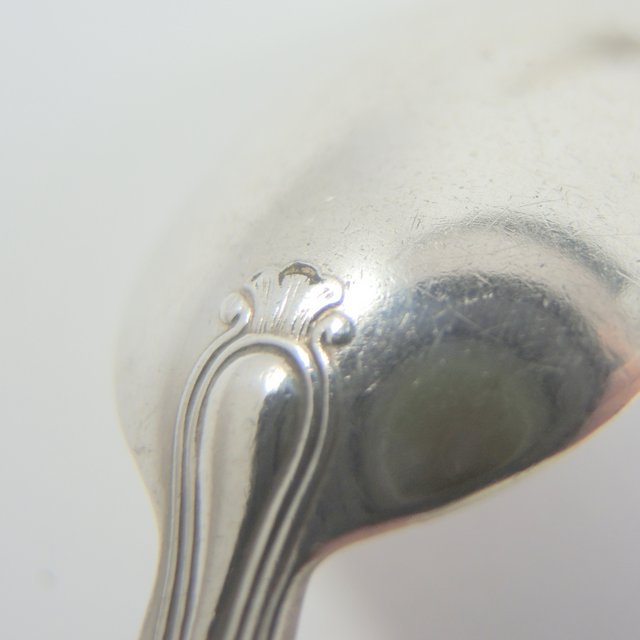
This one is solid silver:
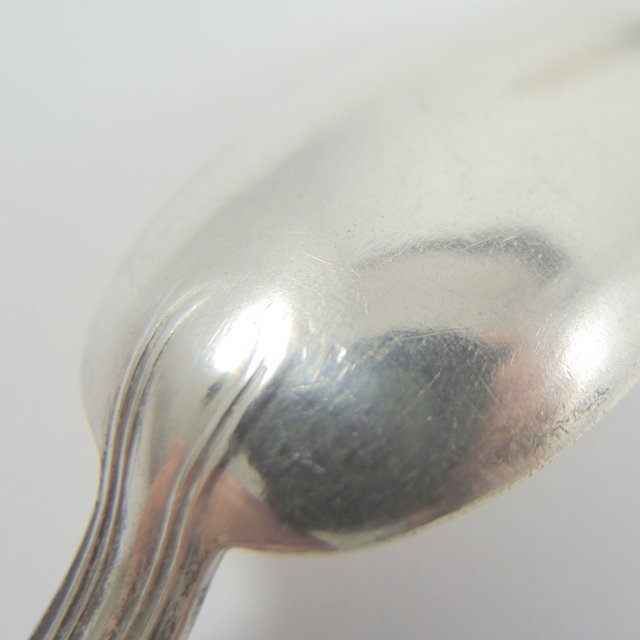
Identifying Marks
It is usual for a solid silver piece to be marked in some way. We call it hallmarking, a system used by most countries to ensure a certain silver content. This guarantees the amount of silver in the item. There are many grades of silver used throughout the world. Again a magnifying glass is an asset as marks are often very tiny. Many pieces are stamped Sterling so this makes identifying easy.
Numbers on solid silver
Sterling silver is a piece of metal that has a silver content of 925 parts in every thousand. That means that there is small part of the metal, 75 parts per thousand, that is made up of another metal like nickle or copper. As silver is a soft but brittle metal this gives it work-ability and durability. Other numbers in the hundreds will also be parts per thousand.
So the next thing to look for is a number in the 100's. 800, 826, 830, 875, 900, 925, 935 and 950 are all seen.
There are many high grades of silver and any marking over 800, that is 800 parts per thousand, is considered high grade silver.
Even though we talk about solid silver, all of these silver assays can be referred to as solid silver as they are not plated.
You will find a list of world silver standards at 925/1000.com,a website we find very useful.
Pictorial marks on solid silver.
If you cannot find a number like those above look for a pictorial mark and there are many.
English marks
The most common marks you will find in Australia are those of English silver smiths. All English hallmarked silver will have a lion passant as shown below.
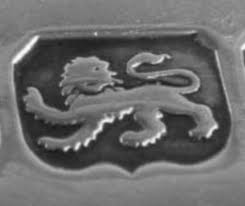
There will also be a date letter, the town mark where it was assayed and a makers mark, something like the picture below.
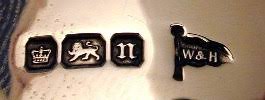
If your piece is English there are many websites to help you identify further. Two of our favourites are:
https://www.925-1000.com/british_marks.html
http://www.silvercollection.it/englishsilverhallmarks.html
Australian Marks
Australian silver is a little elusive but can be found. In Australia there never has been and still isn't any universal hallmarking system. Some of the states implemented their own systems around 1900 but these seemed to disappear from around 1940. Most Australian Silver will be marked STG SIL, S SIL, STG and STERLING SIL. Sometimes with a makers mark. The early silversmiths liked to copy English hallmarks but with their own twist. The lion passant is often used but in conjunction with sterling silver in some form. Also look for distinctly Australian motifs like a gum nuts, kangaroo, emu and koala.
This is a mark for South Australian F. Basse.
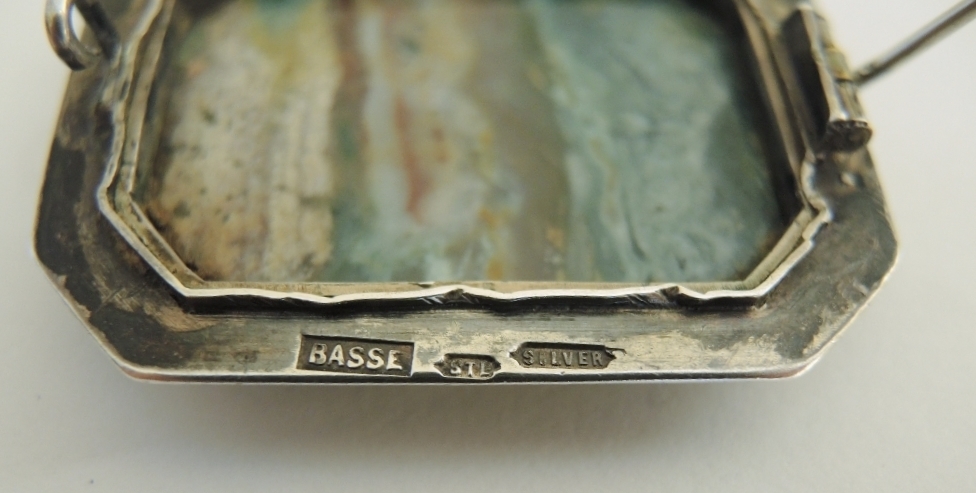
An unknown Australian mark c1860.
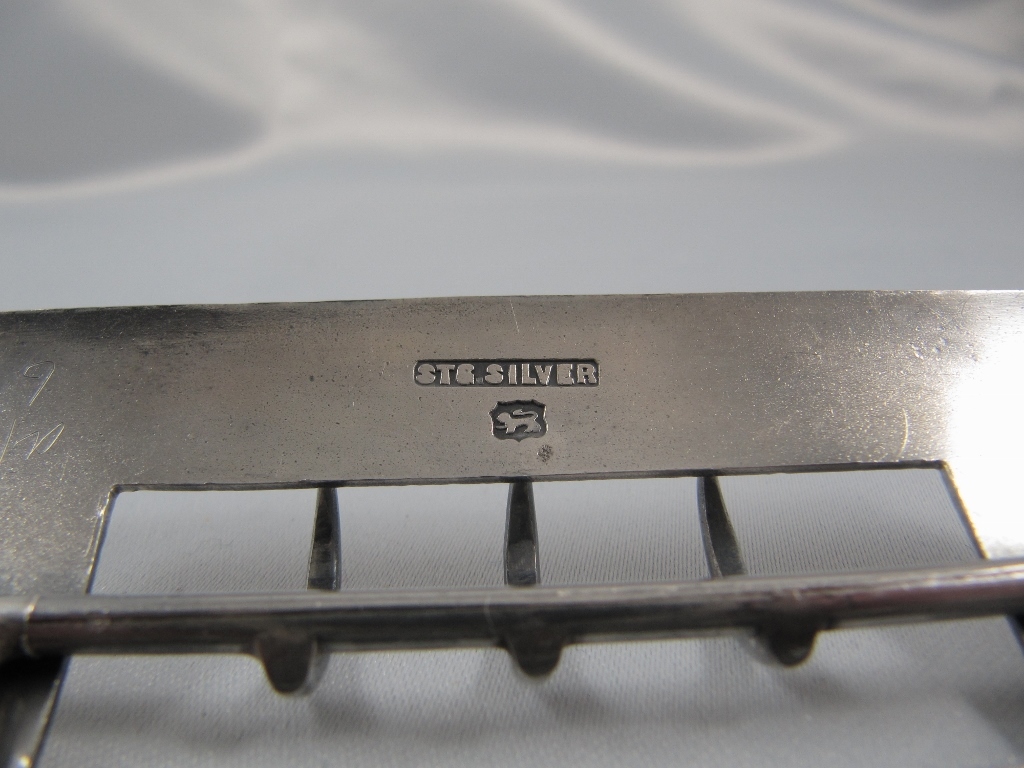
Australian JAL Jamie Lynton mark with gum nut motif
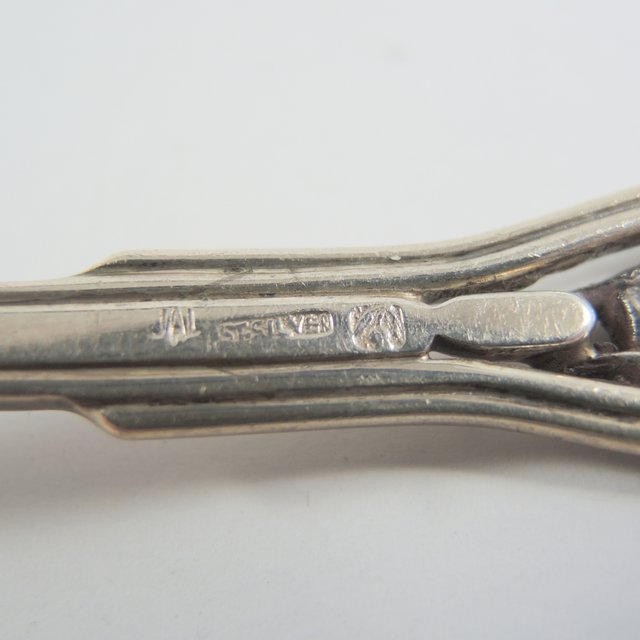
Other Pictorial marks
There are many other markings from different countries. If there is no prominent mark on your piece and you have discounted it as plate get that magnifying glass out and look within patterns as marks are often hidden. Some marks can be very tiny. Here is a great resource for a lot of world marks.
https://www.925-1000.com/foreign_marks.html
Happy researching!
